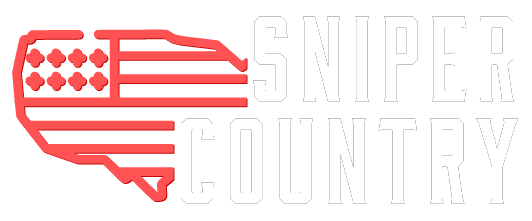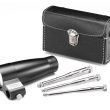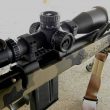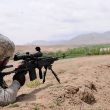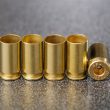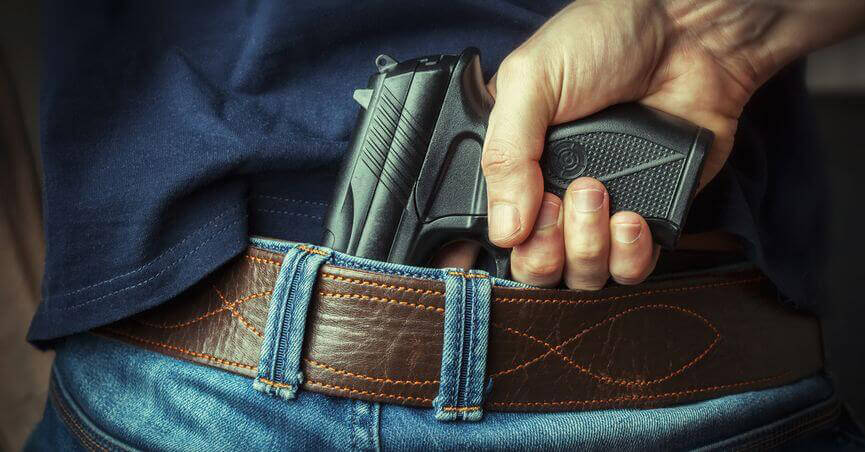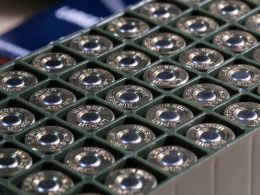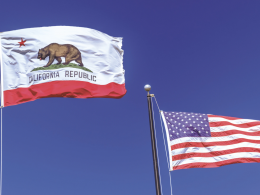During March 2002, Canadian snipers were evading mortars and dodging ammunition fire in eastern Afghanistan. Worse yet, they were almost obliterated by a USA Apache helicopter, which thankfully stopped firing just in time. Canada’s sniper unit modestly deny claims they hold the highest number of confirmed kills than any other military unit in combat.
Operation Anaconda was a USA-led mission to locate and kill al-Qaida and Taliban forces in the harsh, mountainous terrain south of Gardez. On the first day of the mission, the American 101st Airborne Division were unexpectedly surrounded by enemy fire. It took days before three Canadian snipers and three men from the US Special Forces could rescue them.
The al-Qaida fighters had the American company division trapped on a castle-shaped rock for days under constant threat while administering gun fire. During an interview from this location, one of the Canadian snipers from the rescue team described the first week of battle as grueling.
Being a sniper means being discreet, so in the account below, aliases are used to protect real names and identity, but age, rank and hometown stated are factual.
On the 2 March at dawn, as the first US helicopter carrying the 101st Airborne Division (aka the Screaming Eagles) landed on the top of a ridge, they started getting hit by small-arms fire. The Americans were trapped.
But, that’s when the team of three Canadian snipers and three US Special Forces started to move in and find higher ground. It was then that they were able to start taking out the al-Qaida fighters firing from behind rock piles. Master Cpl. Alex, an exceptionally skilled 30-year old from Ottawa and Halifax said, “As soon as we got rid of one guy, another one would come up, and another one.â€
The firefight lasted for an hour but as soon as it was over, another one started. The 101st Division moved into blocking positions while the snipers fought off the persistent enemies. Alex added, “The six of us suppressed fire and neutralized the enemy – they were either dead or they ran away. Most of them were killed, as far as we could see.†Unrestricted, hard-hitting and resourceful, the snipers were elated.
However, their relief was short-lived when an US Apache helicopter arrived with guns blazing in pursuit of the terrorists. With their desert combat uniform, the snipers were camouflaged in the valley. When they heard the rumble of the helicopter, the snipers turned back and saw the ground erupting from the Apache’s gun firing meters behind them. Noticing the snipers at the last possible moment, the pilot ceased the shelling about a meter from them.
To move at a faster pace, the snipers ditched their 50kg backpacks and the extra ammunition. The situation got precarious as they started to run low on ammo and needed the special optics that were left in the backpack. So, they did what any brave soldier does – they ran back to get it. While still under attack, Cpl. Ed, 25. Of Manuels, near St. John’s, Nfld., scurried down the 100 meters back to the ridge to retrieve their gear.
By now, they had climbed 3,500 meters and were starting to take strain as breathing became more difficult, the higher they went. Ed (who does a flawless Sean Connery impersonation) is very athletic and fit, and he almost lost consciousness after his run to get the backpacks. But Ed quickly regained his strength and started firing at approaching al-Qaida fighters with his M-203 grenade launcher. Then suddenly, everything went quiet. Master Cpl. Alex said, “We didn’t know what happened. All we know is, their firing stopped.â€
The sniper team still had to rescue the American 101st Airborne Division who were immobile and vulnerable to enemy attack.
After darkness fell, the Canadian snipers and the US Special Forces reconnoitered the area for enemy movement while stealthily leading the American division back up to safety in small groups. The story ends well where they all made their way back to friendly company.
Reflecting on one incident where the snipers had no cover in a dry riverbed, Master Cpl. “Warren†said, “They were bracketing us, walking them in. We’d move and they’d adjust fireâ€. While they were trying to escape mortar fire coming within 10 meters of them, it all stopped. “Eventually they ran out of rounds or they just gave up. I don’t know,†he added.
On the 11 March, nine days after Operation Anaconda commenced, the snipers were back at their base near Kabul. However, after a short two-day rest, the three Canadians were back on duty.
The next mission was Operation Harpoon, named after a ridgeline in the Arma mountains, known as the Whale’s Back. It overlooked the Shah-e-Kot valley where al-Qaida fighters were hiding out in caves. On the 13 March 2002, over 500 Canadian troops headed for the Whale’s Back. It was Canada’s first helicopter-borne assault and first wartime assault since the Korean War.
Operation Harpoon was under the command of Canadian Lieutenant-Colonel Pat Stogran who also had an eight-man recce squad from the 3rd Battalion in Edmonton. Together they made the strenuous trek to the ridge. During the mission to locate enemy targets, they found stores of bombs and ammunition and a machine-gun nest that overlooked a castle-like rock formation and to the east was a concealed stone bunker. It was from this location that al-Qaida fire controllers were guiding mortars during combat with the 101st Airborne Division.
The Canadian snipers teamed up with the US 10th Mountain Division in an assault on the rock. There was hardly any resistance and several al-Qaida members were killed along with the destruction of a network of caves.
Sniper Ed commented, “The operation showed that Canada is capable of combat operations.†Colleague Alex added, “I’m extremely happy to be here. It’s not about grabbing oil or anything like that. It’s something important. “Every time something happens, I just think about September 11 and all the people who were not involved in armed conflict and were hurt. Innocent people – firefighters, police, women and children – who died just because a man doesn’t agree with the way another people live.â€
Bolt Actions Speak Louder Than Words
Canadian snipers are well known in the international sniping community for the skilled capabilities. This was evident at the U.S. Army Sniper School’s first international sniping competition at Fort Benning, Georgia, where four Canadian Army teams won top honors.
During peacekeeping operations in the Balkans, the utilization of Canadian Army snipers was minimal. However, their involvement increased drastically in Afghanistan where they could finally show off their expertise in combat.
And, it was in March 2002 during Operation Anaconda when two Canadian sniper teams were deployed to support two US Army light infantry battalions (2nd Battalion, 3rd Brigade, 101st Airborne Division [Air Assault], and 1st Battalion, 2nd Brigade, 10th Mountain Division). The Canadians were recruited from the 3rd Princess Patricia’s Canadian Light Infantry Battle Group and battalion reconnaissance platoon in Edmonton, Alberta.
At the Sniper Cell of the Combat Training Center’s Infantry School at CFB Gagetown in New Brunswick, the few dozen Canadian snipers who are in service are trained to eliminate targets up to 800 meters.
It was later officially confirmed by the Canadian Department of National Defense (DND) that six Canadian snipers were responsible for taking out armed Taliban and al-Qaeda terrorists in Afghanistan in early March. These were Canada’s first confirmed enemy kills since the Korean War. Additionally, the snipers were able to demolish machine-gun nests and mortar positions at long range.
Vice-Admiral Greg Maddison, the Deputy Chief of Defense Staff, held a press conference before Operation Harpoon, which was the mission to eradicate remaining threats in the area after Operation Anaconda. The Vice-Admiral said these Canadian snipers had a good kill count during Operation Anaconda so they could probably do more damage to enemy forces in Operation Harpoon. “These sniper teams suppressed enemy mortar and heavy machine-gun positions with deadly accuracy,†he added.
Vice-Admiral Greg Maddison went on to explain how the Canadian snipers killed hostile forces to protect US troops during Operation Anaconda. “As the American battalion was moving down the ridge, confronting Taliban and al-Qaeda fighters, the snipers provided defensive capabilities. As they were moving forward, they had mortars fired at them and at the Americans and they were able to take out some of these positions and protect the troops as they were continuing towards their final objective. Their skills are credited with likely having saved many Allied lives.â€
Maddison did not disclose the exact number of sniper kills nor did he give further detail, only stating, “First of all, we don’t have the specific numbers from the folks on the ground. It’s a very difficult thing to ascertain. The snipers were moving forward with the American battalion. Once the Taliban had been neutralized, if you will, they carried on forward to the objective and we’re not in the business of actually counting how many folks they may or may not have indeed killed. So, I can’t tell you a specific number of how many were.â€
Specific numbers are not being released by the Canadian Department of National Defense but even if they can’t (or won’t), the soldiers know those numbers.
Without Warning, Sans Remorse.
The official motto of the Canadian snipers.
It was during the summer of 1990 when the Canadian Defense Department realized its need for snipers. The then-Royal Canadian School of Infantry (RCSI), CFB Gagetown, NB were assigned to the 5e Groupe-Brigade Mecanise du Canada from BFC Valcartier, Quebec in Operation Salon during the Mohawk Indian uprising in Oka, Quebec.
And, only in 1992 did the School of Infantry transform Canadian Army sniping. The master sniper course and the three Area Training Centers governing the basic sniper courses are part of the school’s instruction. The master snipers can mentor basic snipers through persistent training, which amplifies the impact. The 3PPCLI snipers are based at the Area Training Center’s Basic Course at the Land Force Western Area Training Center, Wainwright, Alberta.
For better management and efficiency, snipers are deployed as a section (of the recce platoon) that comprises a sergeant section commander, two master corporals including the second-in-command, and four snipers. The section has three detachments, each containing two snipers. The section driver is a trained and substitute sniper. Each detachment is structured as a sniper and observer. Snipers and their partners help and support one another through long stints of surveillance, range estimations, round adjustments, as well as providing each other with added security.
The Section Commander is the unit master sniper who advises the Commanding Officer on everything involving sniping and counter-sniping. Typically, this is done through recce platoon commander who is tasked to train and test snipers.
“The employment of snipers will vary by the scale and type of conflict and the selection of weapons and equipment will also remain flexible and task-dependent. Canadian snipers will always operate, as a minimum, in pairs as a two-man detachment,†stated WO Rick Hills, OIC of the Master Sniper Cell at CFB Gagetown.
Serious Body Counts
An informant in Kandahar who was with the Canadian sniper teams estimated “well over 20 confirmed kills at long ranges†when referring to the Canuck’s kill numbers during the Shah-e-Kot Valley fight.
There were rumors of a 2,400-meter chest-shot kill of an enemy supply truck driver. If it is true, then it will be a new world record for a kill at the longest range by a sniper in combat. The current record is about 2,250 meters (2,500 yards), held by GySgt Carlos Hathcock, USMC, near Duc Pho, South Vietnam, in January 1967, with a Browning .50 HMG mounting an 8-power Unertl telescopic sight.
Two Canadian sniper detachments fought alongside the US units. Three snipers joined a group from the 101st Airborne’s 3rd Brigade “Rakkasans.†But, when the Americans got trapped, those three Canuck snipers and three US Special Forces thrust their M24 Remingtons into action.
Once the shooters climbed to a vantage point, it was easier to neutralize the al-Qaeda fighters battling the 101st division. The fight continued for over an hour against the relentless al-Qaeda force. Master Corporal Alex remarked on this event saying, “As soon as we got rid of one guy, another would come up, and another one.â€
Using their McMillan Brothers .50-cal. Tactical Anti-Materiel Sniper Rifle System, the Canadian snipers repeated their long-range shooting to hold the enemy at bay The snipers helped keep the pressure off and the American Division were then able to swiftly move to their assigned blocking positions. In April 2000, the Canadian Infantry Battalions started using the new bolt-action, Long-Range Sniper Weapon (LRSW), which was modified for the Canadian Army and contained a moveable cheek piece and shortened bipods with a fitted 16x Leupold optical sight. With a five-round magazine, weighing 12 kg/26.4 lbs., and 145cm/58 inches in length, the Canadians could push AMAX Match .50-caliber ammunition through it.
It’s a mouthful, but the secondary team commander used a C3A1 7.62mm Sniper Rifle, a Parker-Hale M82 modified to Canadian specifications with a six-round detachable magazine, extended bolt handle, reinforced receiver, improved trigger safety with a match-type barrel. The C3A1 has an Unertl 10x optic USMC-issued and the Norma Match 7.62mm ammunition loaded with the Sierra Match King 168-gr. HPBT(M) bullet.
The LRSW is also fitted with a Gen III and C3 Gen II for Simrad image-intensification devices and low-light work. For backup, they had the Canadian-made Diemaco C-8 5.56mm Carbine (analogous to the U.S. M4) and 9mm Inglis GP (M1935) Hi-Power pistol using standard service ammo. On top of that, they had 20-power compact spotting scopes, Leica Vector binoculars with built-in rangefinder, compass and inclinometer functions, a GPS uplink, and camouflage gear and ghillie suits.
the primary weapon for the sniper team is the LRSW and when using it, the team of two snipers is usually increased to three to make up the sniper team, which consists of the No. 1 (primary sniper) using the LRSW, the No. 2, (team commander) utilizes the C3A1, and the No. 3 (team security) uses the Canadian-made Diemaco C7 5.56mm M16A2 type rifle. Because these systems complement each other, it brings maximum flexibility to the team.
Into The Fray
The American troops were transported by a CH-47 Chinook helicopter and after coming under enemy fire, they had to crawl over bare ground with their two mountain LZs. They were easy targets for heavy machine-gun and automatic-weapons positions on the 10,000-foot Whale’s Back ridge on the West of the valley. With 10,000- to 12,000-feet of the Shah-e-Kot mountain ridge on the East and the Sherkankel village in the valley, the Americans were surrounded by the enemy’s positions and faced direct enemy fire. The American troops stated the enemy had everything from small arms to mortars and heavy machine guns that fired with interlocking arcs from on top the Shah-i-Kot mountains and across from the Whale’s Back. A lot of the men were trapped by heavy fire and they needed to take out the machine guns and mortars that were causing injuries. The best was there to help. The Canadian snipers.
Canadian Press photojournalist, Stephen Thorne interviewed the snipers for a Canadian newspaper. “The six of us suppressed fire and neutralized the enemy. They were either dead or they ran away,†but so much so that they were nearly killed in an Apache helicopter attack. The moment they heard the Apache firing, they looked back and saw two rows of dirt ejected from the ground. The rounds stopped only a meter from them. MCPL Alex said, “I don’t know how the .50 didn’t get hit. We laughed after that. You got to.â€
The team had to abandon their 110-pound rucks to move quicker, but later when they came under fire, they desperately needed the additional optics in the packs left on the ridge. They started running low on ammunition indicating how heavy the firefight was. Once their AMAX Match ammo supply was finished, the one Canadian team had to use US Army .50-caliber ammunition. Corporal Ed undertook the task to sprint to the valley and up the 100-meter ridge to retrieve their rucks and ammo. At 11,500 meters, the thinning air was robbing CPL Ed’s lungs of oxygen and he nearly blacked out after his dash through hostile fire. However, he was still able to do some damage with his M203 40mm grenade launcher. His attack hit al-Qaeda members firing from the dry riverbed.
“We don’t know what happened. All we know is their firing stopped,†said MCPL Alex. The Canadian snipers were under constant mortar fire. MCPL “Warren†said, “They were bracketing us. We’d move and they’d adjust fire. Eventually they either ran out of rounds or they just gave up. I don’t know. You could hear the fins rotating as they came in. It’s a sound I’ll never forget.â€
Chances are, there are a few al-Qaeda guys who also won’t forget the sound of a Canadian sniper rifle reverberating across the Shah-i-Kot valley.
Interview With A Sniper
After Afghanistan, MCPL Alex returned to his unit’s base in Edmonton, Alberta. He gave a three-hour long interview with Soldier Of Fortune about the events and for security reasons, pseudonyms are used instead of their real names.
Ten-year veteran, MCPL Alex trained at the Wainwright sniper course and had been sniping for two years. In 1993, he went to Croatia and enlisted in the Canadian Airborne Regiment in 1994. And, in 1997 and 2000 he was an active sniper in the Balkans and Bosnia. During his tour in Bosnia, he completed a British Army sniper course with fellow Canadian snipers.
Six snipers, including Alex, from 3 PPCLI were sent to Afghanistan. In Kandahar, they were assigned to observation posts and were on duty with Northern Alliance troops. Following that the two three-man sniper teams were attached to the 3rd Brigade (Rakkasans), 101st Airborne Division. The snipers were with C Co, 2d Bn, 3rd Bde of the 101st. Alex still proudly shows his Rakkasans challenge coin. Alex, known as the “shooter,†or No. 1 had a McMillan Brothers .50 caliber. The three US Special Forces shooters teamed up with them for Operation Anaconda. The solitary shooter, who was supported by his two colleagues armed with M4 carbines, also had a Remington 700 (M24), and he was very effective on long-range targets.
When the Canadians were assigned to the 101st Airborne Division, they were in for a shock. The US Army has tons of gear compared to what the Canadian Army troops get. And, being part of the US Marines’ Hooah attitude and spirit was a new experience for the Canadian. Off they went from Bagram Airfield with the Rakkasans to complete Operation Anaconda.
The troops were deployed on the 2 March on a CH-47 Chinook. Luckily, they were able to avoid ground-fire while in transit, unlike other units. But that didn’t last long. Fifteen minutes after landing on the cold LZ they came under enemy fire. The troops moved towards the Whale’s Back, east of the village, Sherkankel. In his interview, Alex said, “I said to Joe, one of the SF snipers, ‘shouldn’t we put a gun up here?’ He told us ‘Let these guys, they’re regular infantry, just let them do their thing, if the shit hits the fan, we’ll sort it out.’ Next thing you know it happened, and we started moving to high ground. We were carrying C-8s, Brownings — the Americans had M4s — and I had the .50 on my back in a drag bag. My spotter had a C-7 with M203 grenade launcher and the radio.†That’s when the sniper team sprung into action and found a firing position to support C Company.
“We helped them by taking out certain positions so they could carry on with the primary task. Our engagement distances that day were from 777 meters to 1,500 meters.†The US and Canadian spotters had a much closer confrontation with al-Qaeda. “We took fire from the rear, maybe 10 meters away from us; we looked at each other like ‘What the hell is that!’ and one of the spotters turned around and covered us.â€
MCPL Alex and his snipers were getting hit by an RPG from the rear. With their quick thinking, both Canadian and American snipers used M203 40mm grenade launchers. The Canadians had 5.56mm C-7A1s with Elcan low-mount optical sights and M203 grenade launchers. Their counterattack was to suppress the enemy fire nears the wood-line. “We had debated taking the M203 with us. We were taking fire from a tree line (to our front) and we couldn’t see where he was, and I wasn’t going to waste a shot there. So, he (the Canadian team’s No.3) came up and just started pumping out rounds along with one of the SF guys with a grenade launcher. So, I used it to mask the sound of my firing.â€
